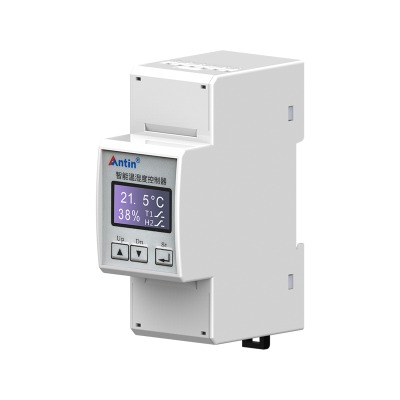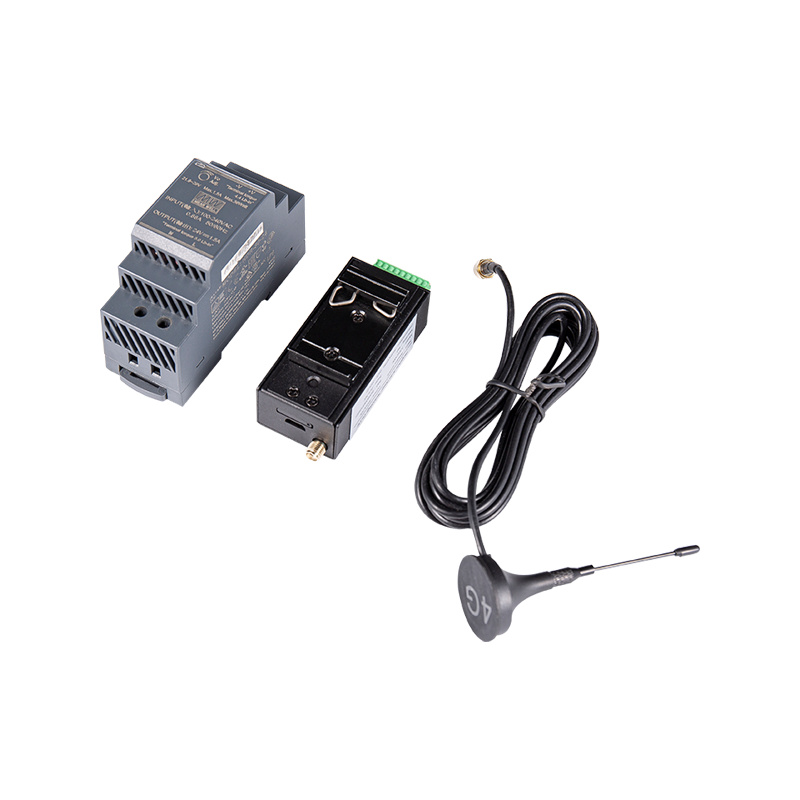Temperature and Humidity Controller: A Practical, Search-Focused Guide for Real-World Environments
Greenhouse Climate Control: From Seedling to Harvest
Greenhouses live and die by stability. Temperature governs photosynthesis, respiration, and nutrient uptake, while humidity shepherds stomatal conductance, disease pressure, and transpiration. A modern controller serves as the silent conductor of this orchestra, reading environmental signals and coordinating heaters, fans, vents, evaporative pads, and humidifiers to keep plants inside their optimal physiological envelope. When growers search for scalable, practical solutions that do not require specialty programming, they frequently look for a temperature and humidity controller for greenhouse automation that balances simplicity with the flexibility to handle changing seasons, crop stages, and diurnal swings. The essential promise is not just holding a number but reducing variance, preventing overshoot, and minimizing energy waste while safeguarding plant health during heat waves and cold snaps.
Key Targets Across Growth Stages
Seedlings prefer warmer, moister air to reduce stress and encourage root formation; mature fruiting plants tolerate slightly lower humidity to curb fungal risk while maintaining an adequate vapor pressure deficit. These targets are not static: pre-dawn heating bumps, mid-day venting, and late-afternoon humidity trims can be scheduled to match the plant’s daily rhythm. Controllers that support time-of-day setpoints and staged outputs make it straightforward to apply nuanced recipes for each phase.
- Early propagation often benefits from tighter bands around temperature and higher relative humidity for consistent emergence.
- Vegetative growth may increase airflow and reduce average humidity to strengthen stems and limit pathogens.
- Fruiting stages prioritize airflow patterns and slightly drier air to protect blooms and fruit surface quality.
Controller and Sensor Considerations
Accuracy and placement of sensors matter as much as the algorithm. Shielded probes mounted at plant height, in representative locations away from direct sun shafts and irrigation spray, provide reliable feedback. Redundant sensors can be averaged or voted to prevent a single bad probe from causing drift. For outputs, staged relays for fans and heaters reduce on/off cycling, while proportional control (or variable-speed drives) provides smoother responses. Alarms for high/low thresholds, power loss, and sensor failure reduce risk during unattended hours.
Setpoint Planning and Energy Balance
Well-planned setpoints avoid tug-of-war between heating and cooling. A deadband between heating and ventilation prevents oscillation. Night setbacks save energy without stunting growth if dew point is controlled to avoid condensation on foliage. When evaporative cooling is used, the controller must coordinate humidity rise with disease thresholds; adding time limits or humidity caps can keep conditions healthy while still extracting peak cooling during hot afternoons.
Example Ranges by Stage
| Crop Stage | Typical Temp Setpoint (°C) | Typical RH Range (%) | Control Notes |
|---|---|---|---|
| Propagation | 22–26 | 70–85 | Use gentle heat + misting; ensure airflow to avoid damping-off. |
| Vegetative | 20–24 | 55–70 | Increase circulation; stage fans; maintain deadband between heat/vent. |
| Bloom/Fruiting | 18–23 | 50–65 | Prioritize disease suppression; ventilate early to reduce leaf wetness. |
In practice, two greenhouses may require different strategies even for the same crop because glazing, latitude, and equipment efficiency vary. That is why robust controllers emphasize programmable schedules, hysteresis/deadband settings, alarm logic, and options to add additional zones as the operation scales. A greenhouse-ready configuration protects plants first while delivering predictable energy bills, which is the foundation of profitable yields.
App-Enabled Monitoring and Alerts for Everyday Spaces
Remote access is no longer a luxury; it is a practical safety net for small businesses, labs, cold rooms, and home environments. A WiFi temperature and humidity controller with app control lets you view live readings, change setpoints, and receive push notifications when conditions drift—whether you are across the facility or across town. The convenience is obvious, but reliability and security must come along for the ride. Good implementations allow local control first, keep schedules running even when the internet blinks, and provide transparent logs for audits or troubleshooting. App-centric features also enable graphs to reveal patterns like afternoon heat spikes or nighttime humidity creep that you might miss on a simple display.
Where Remote Control Makes the Biggest Difference
- Unattended rooms—server closets, instrument bays, storage spaces—benefit from instant alerts instead of discovering issues the next morning.
- Seasonal rentals or vacation homes avoid condensation and mold problems when heating or dehumidification is managed proactively.
- Small business back rooms (florists, bakeries) keep product quality consistent with easy schedule tweaks during weather swings.
Setup, Networks, and Alarms
Initial configuration typically includes joining a 2.4 GHz Wi-Fi network, naming zones, and setting alert thresholds and recipients. SMS or push alerts should be rate-limited to avoid spam during an ongoing event, with escalation rules for critical thresholds. If available, local APIs or export features let you integrate the controller with dashboards and environmental logs.
Connectivity Trade-Offs Explained in Words
Wi-Fi offers easiest reach and rich apps but depends on your router and sometimes cloud services; Bluetooth is simple and local but range-limited; Zigbee or other mesh protocols can be robust across multi-room facilities but often need a hub; “no-connectivity” controllers have maximum reliability for core control but no remote data or alerts. The right choice is dictated by how much you need off-site visibility versus absolute independence from networks.
| Connectivity | Pros | Cons | Best Fit |
|---|---|---|---|
| Wi-Fi | Remote access, graphs, alerts | Depends on router/internet; secure setup required | Homes, small business rooms, offices |
| Bluetooth | Quick pairing, local control | Short range; no off-site alerts | Single-room tuning on-site |
| Zigbee/Thread | Mesh reliability, low power | Needs hub/gateway | Multi-room facilities |
| Standalone | Max reliability, no cloud | No remote visibility | Critical processes with on-site staff |
Privacy, Security, and Resilience
Prioritize setups that let you operate locally during an outage and that store logs on-board or export them periodically. Change default passwords, restrict admin access, and segment networks when possible. For resilience, configure fallback setpoints and audible alarms so that even if phones are offline, the room remains protected. The goal is a controller that adds visibility without adding a new failure mode.
Rugged, Regulated, and Recorded: Industrial Environments
In production, research, and regulated storage, consistency must be defensible. An industrial temperature and humidity controller with data logging offers accuracy, auditability, and control strategies that withstand load swings and frequent door openings. Beyond basic setpoints, industrial contexts demand documented calibration, role-based access, immutable logs, and redundancy so that a single sensor failure does not bring a line to a halt. Controllers often feed records to supervisory systems and provide alarms with acknowledgment tracking to prove issues were seen and addressed.
Why Algorithms Matter: On/Off vs PID vs Fuzzy
On/Off control is simple and robust but can overshoot on high-inertia systems. PID moderates output proportionally, improving stability and reducing oscillation, but requires tuning. Fuzzy or adaptive methods can respond gracefully to changing loads without manual retuning. In words: On/Off tends to “bang-bang,” PID smooths, and fuzzy adapts. Choosing between them depends on process inertia, sensor lag, and how tightly you must hold specs.
| Control Method | Response | Accuracy | Overshoot Risk | Tuning Effort | Typical Use |
|---|---|---|---|---|---|
| On/Off | Fast switching | Moderate | Higher if inertia large | Minimal | Small chambers, simple rooms |
| PID | Smooth, proportional | High | Low with good tuning | Medium | Process rooms, stability tests |
| Fuzzy/Adaptive | Context-aware | High | Low | Medium–High | Variable loads, frequent door opens |
Data Integrity and Redundancy
Industrial setups earn their keep when things go wrong. Dual sensors with plausibility checks prevent drift from a single bad probe. Battery-backed memory preserves logs during outages, and write-once exports provide an audit trail. Alarm relays can be wired to lights or buzzers to guarantee a human notices. Regular calibration with traceable references keeps confidence high; the controller should track calibration dates and next-due reminders.
Risk Reduction and Compliance-Friendly Features
- Role-based access keeps tuning separate from read-only users; every change is recorded with a timestamp.
- Load-shedding rules keep compressors from short-cycling and extend lifespan.
- Door-open inputs temporarily relax humidity targets to prevent runaway and then recover steadily.
The sum of these features is defensible stability: not just a steady line on a graph but a system that explains itself when audited and stays safe when a component fails.
Stable Microclimates for Reptile Care
Reptiles rely on external heat and ambient moisture; their health tracks the microclimate you create. A dependable temperature and humidity controller for reptile terrarium is the difference between guesswork and a repeatable habitat. The controller ties together heat mats or ceramic emitters, overhead lamps, misters, and fans. Good practice establishes a warm basking area, a cooler retreat, and humidity cycles that mimic natural patterns while avoiding condensation and bacterial growth. Because enclosure size, substrate, and room conditions differ, the controller’s deadbands and maximum-on timers should be customized to prevent overheating or over-misting.
Species-Driven Targets
Not all reptiles want the same climate. Desert species tolerate low humidity with high daytime temperatures; tropical species need elevated humidity and milder heat; montane species benefit from cooler nights. Controllers with day/night schedules let you reproduce these rhythms and offer seasonal “profiles” for breeding. Probe placement should reflect the animal’s behavior—near the basking area for temperature reference and mid-height for humidity to avoid misleading readings at the lid or substrate.
| Habitat Type | Day Temp (°C) | Night Temp (°C) | RH Range (%) | Notes |
|---|---|---|---|---|
| Desert | 28–35 (bask 38–42) | 20–24 | 20–40 | Ensure safe basking distance; dry substrate. |
| Tropical | 24–30 | 22–26 | 60–85 | Mist cycles; ventilate to prevent stagnation. |
| Temperate/Montane | 22–27 | 16–20 | 40–60 | Nights matter; avoid abrupt drops. |
Safety and Common Pitfalls
- Always use thermostatic control for heat sources; never run heat mats unregulated.
- Add maximum-on timers to misters and dehumidifiers to stop runaway if a sensor shifts.
- Verify readings with a handheld thermometer/hygrometer monthly and recalibrate if needed.
By treating the enclosure like a small process room—with proper sensors, scheduled cycles, and alarms—you provide a healthier, stress-free environment and reduce the risk of respiratory or skin issues linked to instability.
Consistent Fermentation for Home Brewing
Flavor follows fermentation control. Yeast metabolism is extraordinarily sensitive to temperature, and moisture inside a fermentation chamber or cellar affects sanitation and the risk of mold. A plug and play temperature and humidity controller for home brewing pairs simplicity with precision: plug the fridge or heat belt into the marked sockets, place the probe against the fermenter with insulation, and apply a tuned deadband that avoids rapid cycling. With a good schedule, you can hold a clean lager at cool temps for weeks, ramp an ale for diacetyl rest, or stabilize a sour in a warm, humid niche without fighting condensation every morning.
Profiles and Practical Tuning
- Ale: 18–22 °C primary, with a 1–2 °C bump near the end for cleanup; moderate humidity reduces condensation.
- Lager: 8–12 °C primary, extended conditioning near 0–4 °C; humidity control prevents frost and mold in the chamber.
- Mixed Fermentation/Sours: 20–26 °C steady warmth accelerates activity; monitor humidity to protect wood and seals.
Wiring and Probe Strategy
Probe placement determines what you actually control: air reacts fast but overshoots; a probe insulated against the fermenter wall tracks liquid temperature more accurately but responds slowly. A hybrid approach uses primary control from the vessel probe with a secondary air-temp limit to prevent extreme swings. Anti-short-cycle delays protect compressors, and differential setpoints for heat and cool prevent tug-of-war.
| Style | Primary Temp (°C) | Humidity Aim (%) | Notes |
|---|---|---|---|
| Ale | 18–22 | 45–60 | Raise 1–2 °C for final cleanup. |
| Lager | 8–12 | 40–55 | Enable compressor delay; avoid ice buildup. |
| Sour/Mixed | 20–26 | 50–65 | Stable humidity protects wood and gaskets. |
Moisture Management and Cleanliness
Humidity that is too low leads to dried gaskets and air leaks; too high invites mold. Controllers with short dehumidify bursts or gentle heat cycles keep chambers dry without temperature spikes. Log data to spot patterns—if RH spikes after every door open, plan a timed dry-out cycle right after transfers. Reliable, repeatable control turns brewing from chance into craft, delivering predictable mouthfeel and aroma across batches.






